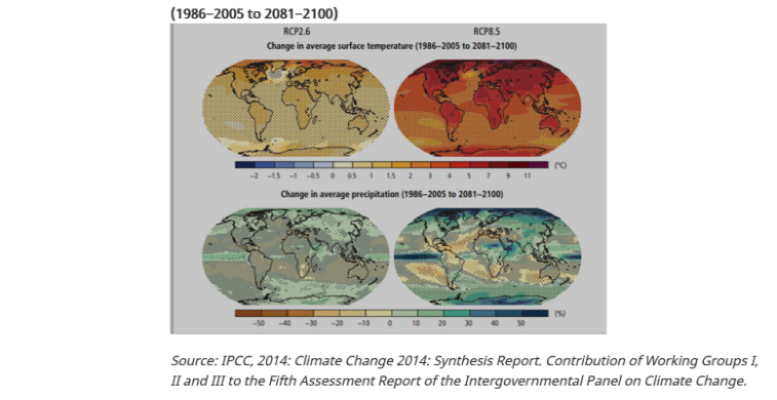[ad_1]
RIVAS-VACIAMADRID, SPAIN – FEBRUARY 14: A model walks the track during the sustainable flyer … [+]
Getty Images
By Rachel Meidl
The principles of circular economy (CE) are gaining ground in political, economic and scientific fields and gaining popularity in corporate strategies as well as among local and national governments, including China, Japan, United Kingdom United, France, Germany, Canada, the Netherlands, Sweden and Finland.
The term ‘sustainability’ is often used in conjunction or synonymous with EC, arguably the most misinterpreted descriptor of the decade, ubiquitous in the narrative of decarbonization, energy transition and waste minimization. However, although there is a relationship between sustainability and an EC, these two concepts are very distinct.
Sustainability: a systems-level approach
Sustainability in its most authentic form is a systems-level approach that takes into account the wide range of environmental, social and economic factors and assesses their interaction (Figure 1). It assesses, by way of example, geopolitics, impacts on indigenous communities, socio-technical capacities and other sub-fields.
Graph 1. Sustainability
The author’s interpretation
Sustainability involves quantifying and understanding the risks, trade-offs and unintended consequences, from a lifecycle perspective, across the entire value chain. This is what leads to long-term system equilibrium. There is very little understanding or application of this in policy and decision making today. While there is an environmental dimension, sustainability is much more complex than simply focusing on conservation / preservation, choosing presumably environmentally friendly options, or switching to alternative energies. A comprehensive understanding of the impact on the whole system and of any potential risk changes is necessary before an action, policy or product is deemed sustainable.
Theoretically, sustainability is not the property of something. Isolated things cannot be durable (i.e. paper straws, solar panels, electric vehicles, etc.). Sustainability is a characteristic of an entire system, not a singular focus on an individual part. It embodies the way the parties interact to enable effective overall results. From a sustainability perspective, individual parts cannot be optimized without optimizing the whole. For example, an electric vehicle is not sustainable if we take into account the unquantified and unaccounted for social and environmental impacts that cover the lifecycle of the lithium-ion battery that powers the vehicle – from mining, processing. , smelting, trade and transportation around the world. network supply chain to lack of recycling and end-of-life battery reuse options. The geopolitics and human rights violations involved in such processes, as well as the potential to operate in sensitive environments and collaborate with corrupt regimes with weak environmental, safety and labor laws or absent, can also undoubtedly affect the overall sustainability profile of a system.
This scenario is why sustainability imposes such a distorted and complicated challenge on our existing utilitarian structure, because traditionally we apply a very systematic and diagnostic approach to management and policy development. We take apart, dissect, and examine systems into their constituent components, analyze and aggregate the parts, and then attempt to synthesize and optimize, assuming that if all the parts seem to work, the whole is efficient. This superficially plausible facade emerges when a limited perspective of sustainability is exploited, and it ultimately inhibits the balance of systems.
By evaluating something as complex as an entire economy or a global supply chain, it becomes even more critical to understand how the components synchronize and integrate across the entire network. Focusing only on the individual parts invariably shifts risk elsewhere in the system, producing unsustainable and undesirable results.
How does an EC relate to sustainability?
The CE (Figure 2) is presumed to have the potential to interrupt the current linear economy of production, consumption and generation of unsustainable waste by encouraging innovation of the system that designs waste, increases resource efficiency, maintains the materials used and decouples the growth from the consumption of finite resources, thus achieving a healthier balance between economy, environment and society. The ultimate goal is to move to a regenerative circular system where the societal value of products, materials and resources is maximized over time. CE builds resilience to future disruptions, such as pandemics, extreme and one-time weather events, or the impacts of climate change.
Figure 2. Circular economy
The author’s interpretation
Sustainability, mediated by innovation, can enable CE, and CE can be a means or stepping stone towards alignment between the three dimensions of sustainability.[1]
However, circularity by itself does not guarantee positive social, economic and environmental performance (i.e. sustainability). Just as durability can be distorted, so comes great versatility, scope and applications, and definitional ambiguities. In fact, some actions are favorable and increase circularity, but lead to unintended externalities which modify the sustainability profile. For example, a number of life cycle assessments show that some alternatives to plastics perform poorly from an energy and resource perspective.
And while circularity has proliferated and the concept of sustainability has reigned in political and economic discourse, no method or combination of methods exists to quantify the sustainability impacts of circular strategies.[2]
How do we establish connectivity to keep the system balanced?
China, ostensibly the global pioneer of CE, has made circular strategies part of its national priorities since the early 2000s, recently publishing its 14th Five-Year Plan (2021-25). Although the United States
USM
Ensuring a successful transition to a sustainable EB requires a common understanding and approach to circularity; a recognition of the relationship and contributions of circularity to sustainability and long-standing principles of waste management; and the ability to measure and report consistently at the micro level (i.e. a single company, product or process) and large scale (i.e. an entire company; a local, regional or national government; or even a global system). Incorporating systems-level thinking into new policies and joining forces along the value chain can minimize the impacts of sourcing and extraction and can improve recycling and waste management.
Preparation and conversations should begin now on how we can optimize human, capital and natural resources to create a circular and sustainable economy. When assessed from a systems sustainability perspective, circularity can uncover new investment opportunities, create new business models, encourage innovative products and technologies, foster collaboration in the supply chain, and build a much more resilient economy in the face of future global disruptions.
Rachel A. Meidl, LP.D., CHMM, is an energy and environment researcher at the Baker Institute-Center for Energy Studies, Rice University.
[1] Rossi, E., Bertassini, AC, dos Santos Ferreira, C., do Amaral, WAN, & Ometto, AR (2020). Circular economy indicators for organizations considering sustainability and business models: plastic, textile and electro-electronic enclosures. Cleaner Production Journal, 247, 119137.
[2] Walzberg, J., Lonca, G., Hanes, RJ, Eberle, AL, Carpenter, A., & Heath, GA (2021). Do we need a new method of assessing sustainability for the circular economy? A critical review of the literature. Frontiers of sustainability, 1, 12.
For the full dossier on this subject, see:
[ad_2]

/https://specials-images.forbesimg.com/imageserve/61093fc970ee28d929cafe28/0x0.jpg)










